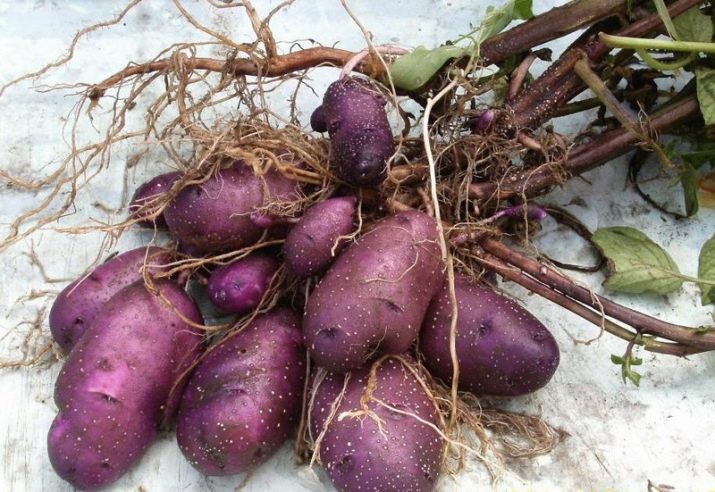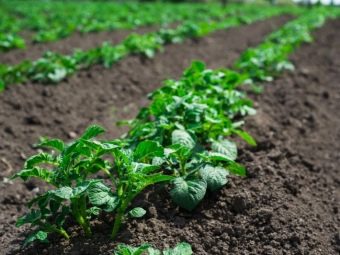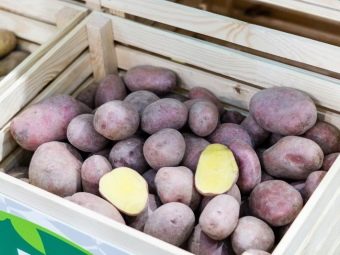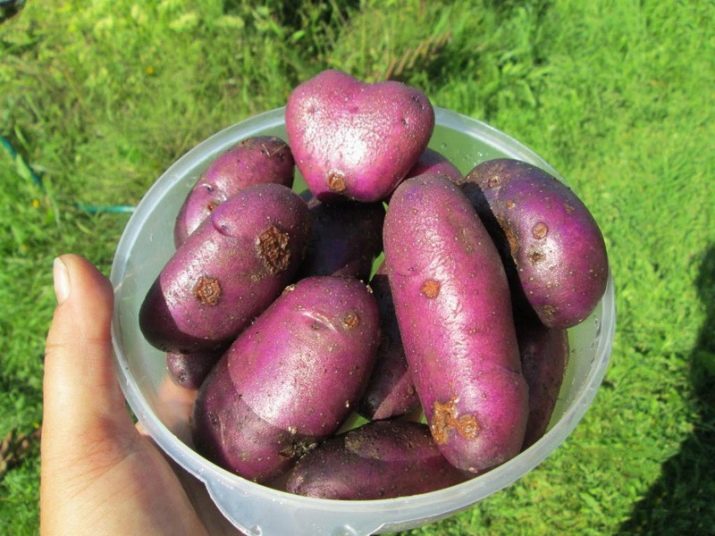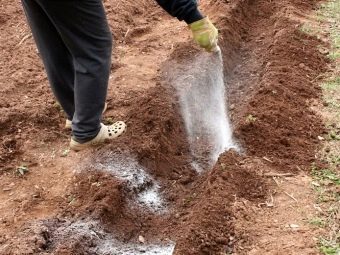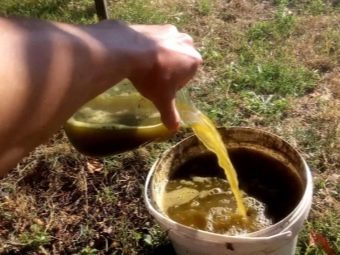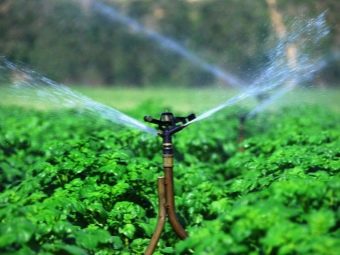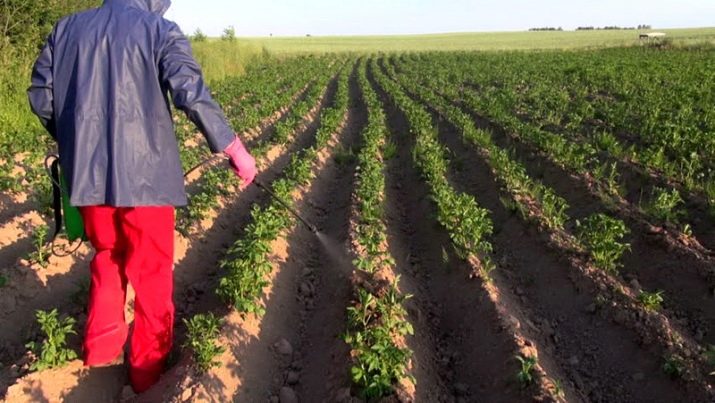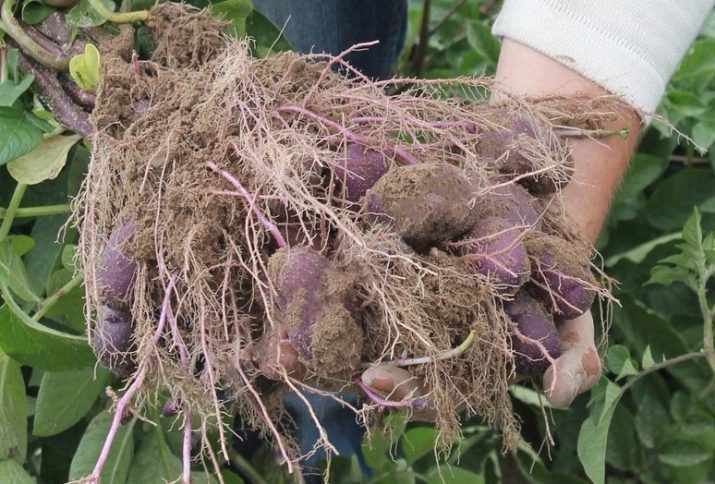Cornflower potatoes: varietal characteristics and cultivation
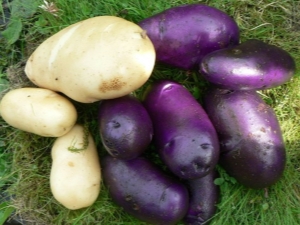
Many gardeners plant potatoes in their own summer cottages. This vegetable crop is easy to maintain, healthy and very tasty.With such an extensive range of varieties, it is not always possible to find a good variety the first time. Today we will talk about the potato "Cornflower" and its characteristics.
Features and description of the variety
Potatoes of this variety grow well on almost the entire territory of Russia, except for the northern regions of the country. It is distinguished by one important feature - a unique shrub that has large-sized dark green leaves growing on upright massive stems. During flowering on the upper parts of the shoots appear scattering of purple flowers.
Tubers of such potatoes have an oval elongated shape. They are covered with a blue-violet smooth skin with a glossy shade. The eyes are small, almost imperceptible. This seed vegetable has a brown color with a slight bluish tint.
On the cut, the pulp of the culture has a cream color. Its consistency is soft and dense, with medium wateriness. The average weight of the tuber is 80-115 g.
Potatoes of this variety contain 16-20% starch. In good years, you can collect about 200-470 kilograms per hectare. On average, one bush is capable of producing 15 potatoes. The persistence (capacity stored for a long period of time) is 96%.
Advantages and disadvantages
Cornflower potatoes have a number of important advantages. Among them are the following facts:
- high yields;
- does not require much hilling, as the bush is upright and compact;
- the presence of large tubers;
- excellent taste;
- tubers contain large amounts of vitamin C and carotenoids (they are antioxidants and prevent the formation of free radicals);
- decorative appearance of the vegetable;
- quick readiness for harvesting (it can be carried out in 60-70 days after the appearance of the first shoots);
- great for cooking first and second courses, as the tubers do not fall apart when cooked due to the high content of starch in this potato.
Despite this, potatoes of this variety have some drawbacks. The main negative points:
- tendency to form annular and dry rot on potatoes;
- high susceptibility of the golden cyst nematode;
- impossibility to plant on acidified soil, as in this case there will be little harvest;
- tubers germinate too quickly, which makes storage difficult in winter.
Landing
To the tubers before planting were in good condition, they need to be stored in dark cool rooms. In February, the vegetables begin to spread for germination. Do it only in one layer. From above it is better to cover potatoes with sawdust. Regularly need to moisten the future harvest.
Before planting should prepare the ground. To do this, it is fertilized with manure or a layer of humus. Ground dig, while leaving large clumps of earth intact.
Many experts advise to sow the territory next to such potatoes with rye, wheat, and colza. After all, these cultures are capable of enriching the earth with organic substances.
After the plant grows to 10 cm, it should be mowed or even completely dig. This procedure must be repeated in the spring. It is recommended to apply fertilizer and humus to the soil. After the onset of the warm season, you can plant potatoes in the ground.
Before planting, fertilizer or ash should be put in each well, which enriches the earth with microelements. Sprouted tubers are planted buds up, as this accelerates the germination of the vegetable. Depth of landing can be different. The lighter the land, the deeper the plant can be planted.
Care
Like most other varieties of potatoes, “Cornflower” needs regular watering, fertilizers, and protective agents that do not allow pests and parasites to spoil the vegetable. Particular attention should be paid to removing weeds next to potatoes. This is done by mulching or weeding.
But at the same time, remember that you can not take coniferous plants for mulching.After all, they contribute to a strong acidification of the earth. For all the time of plant development, spud it should be at least 3 times.
Fertilizers for such potatoes can be taken different. Most often, experts advise bird droppings, which are diluted in water in a ratio of 1: 10. You can also use urea (1 tablespoon. Per 10 liters of water).
Many prefer manure. At 1 liter is taken 10 liters of water.
Today, many gardeners use different herbal infusions. First, they are fermented, and later applied at the stage when plants begin to consume nitrogen from the soil. Extra feeding of potatoes with infusion of nettle or phosphorus is also often practiced among gardeners.
Special attention is given to watering potatoes. Moisturize the soil is from the moment the plants enter into the flowering process. This can be done only at the root, and not on top of the plantings. After that, the ground must be thoroughly gnawed, this greatly improves aeration. Then the bushes spud, laying the ground on the stems.
Potato bushes are usually watered in cloudy weather or in the evening. Sprayers should not be used for this. If water gets to the tops, late blight can develop on the plants.
To protect the potatoes from pests, it is treated with special means before planting. For this, the tubers are either soaked in a solution, or simply sprayed with a substance.
If the drug is available only in dry form, then it must first be mixed with sifted wood ash. The resulting mixture through a sieve sprinkled potato bushes.
Selection of seed
Since Cornflower potatoes are often exposed to the golden nematode, seed should be carefully prepared for planting. It includes several stages.
- Take even and healthy tubers. They should not be growths and significant damage. The weight of such material can reach 50-70 g.
- Tubers must be irrigated using copper sulphate solution. To do this, take 1 tbsp. l substances on one bucket of water.
- Tubers are dried and laid out to light in order for the seed material to germinate.
Reviews
Some consumers have noted the excellent taste of potato "Cornflower". Often it is used for dietary or baby food. Also, many gardeners talk about the high yield of this variety compared to other species.
Summer residents also noticed that the potato "Cornflower" is quickly affected by blight or scab. But at the same time, most experts associate these phenomena with the fact that plants are planted on unsuitable soils (acidified areas) or the fact that all necessary preparatory work was not carried out before planting.
Many housewives say that this kind of potato is not boiled soft during cooking. Also, due to its medium size and slightly oblong shape, it is convenient to take it for preparing various dishes. Agrarians speak about the good resistance of this vegetable to pests and insects. Especially the Cornflower variety is resistant to Colorado beetles.
Description of the potato "Cornflower", see the following video.

